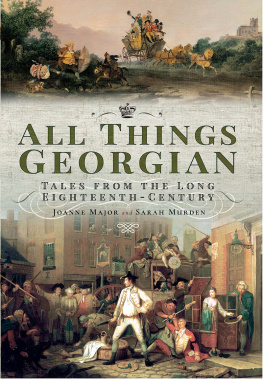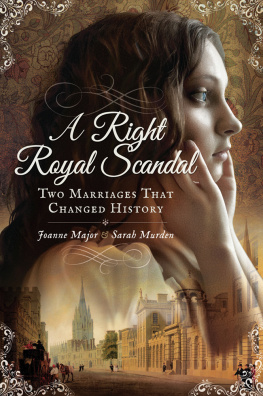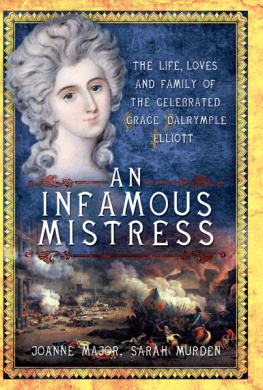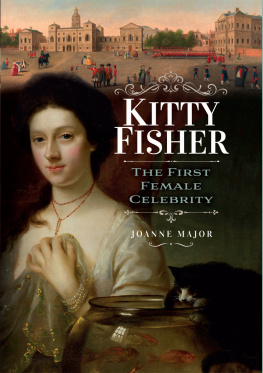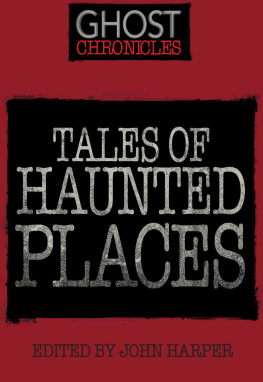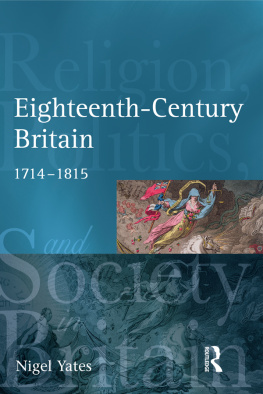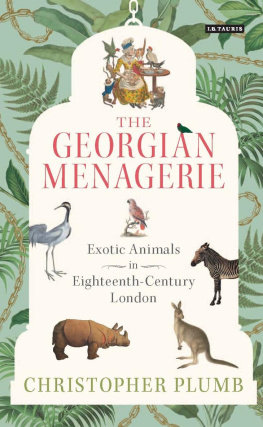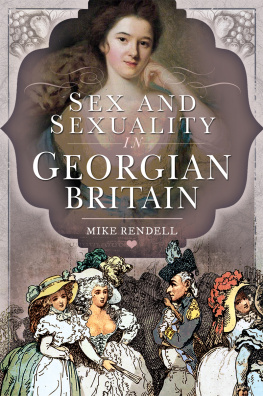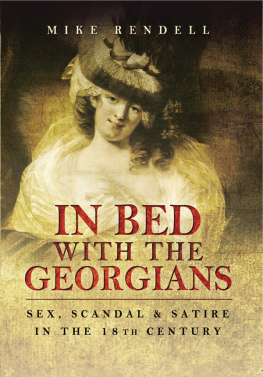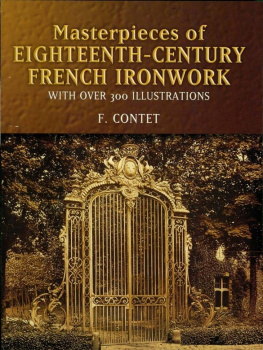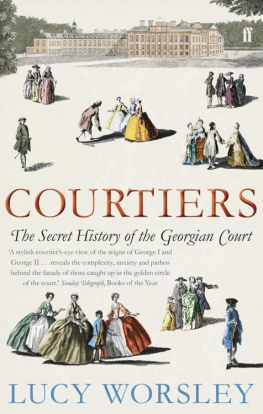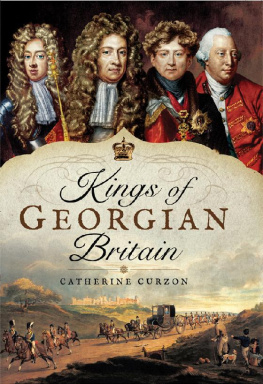Pagebreaks of the print version

All Things Georgian
Dedicated to
Luke & Aeron
All Things Georgian
Tales from the Long Eighteenth-Century
Joanne Major and Sarah Murden

First published in Great Britain in 2019 by
Pen & Sword History
An imprint of
Pen & Sword Books Ltd
Yorkshire Philadelphia
Copyright Joanne Major and Sarah Murden 2019
HB ISBN 978 1 52674 461 6
PB ISBN 978 1 52675 785 2
eISBN 978 1 52674 462 3
Mobi ISBN 978 1 52674 463 0
The right of Joanne Major and Sarah Murden to be identified as Authors of this work has been asserted by them in accordance with the Copyright, Designs and Patents Act 1988.
A CIP catalogue record for this book is available from the British Library.
All rights reserved. No part of this book may be reproduced or transmitted in any form or by any means, electronic or mechanical including photocopying, recording or by any information storage and retrieval system, without permission from the Publisher in writing.
Pen & Sword Books Limited incorporates the imprints of Atlas,
Archaeology, Aviation, Discovery, Family History, Fiction, History,
Maritime, Military, Military Classics, Politics, Select, Transport, True
Crime, Air World, Frontline Publishing, Leo Cooper, Remember When,
Seaforth Publishing, The Praetorian Press, Wharncliffe Local History,
Wharncliffe Transport, Wharncliffe True Crime and White Owl.
For a complete list of Pen & Sword titles please contact
PEN & SWORD BOOKS LIMITED
47 Church Street, Barnsley, South Yorkshire, S70 2AS, England
E-mail:
Website: www.pen-and-sword.co.uk
Or
PEN AND SWORD BOOKS
1950 Lawrence Rd, Havertown, PA 19083, USA
E-mail:
Website: www.penandswordbooks.com
Acknowledgements

W e would like to thank Retford Town Hall, Bassetlaw District Council, the Garrick Club, Aberystwyth University School of Art Museum and Galleries, the Rijksmuseum and the Philadelphia Museum of Art for allowing us to use paintings from their collections. Also Northumberland Archives who supplied a key piece of information that helped to identify one of the people mentioned within these pages.
As always, we would like to thank the whole team at Pen & Sword Books for their continued support and belief in us.
Joanne Major and Sarah Murden
2019
Introduction

What was the long eighteenth-century and what made it so special?
T he long eighteenth-century is a term often used to loosely describe the historical period from the late seventeenth-century up to the death of George IV in 1830. When writing this compendium of true stories, we have defined it as the period just prior to the turn of the century through to the death of George IV in 1830.
It was a period of great change with many long-running battles between countries: think Jacobite rebellions, the American Revolutionary War and the Battle of Waterloo, and also conflicts between the social classes, with the French Revolution resulting in many of the elite losing their heads courtesy of Madame Guillotine. In Britain too, people rose up against chronic famine and unemployment and there was a growing radicalism on these shores. However, technological advances and the Industrial Revolution were to transform Britain. In the second half of the eighteenth-century Britain became a world leader in the mechanization of tasks, moving from hand-powered work and the cottage industry of frame-work knitters to the invention of the loom and large-scale mills and factories.
Huge leaps in the advancement of science and exploration were made during the era. Within this book you can read about the astronomical discoveries of the Herschels and perhaps gain a different perspective on the renowned naturalist and botanist Sir Joseph Banks who, with the explorer Captain Cook, discovered new lands and advanced our scientific knowledge of the natural world.
The first balloon flight and the introduction of a vaccine for smallpox were among the many varied achievements of the era which ended with the introduction of the railway to Britain.
The Hanoverians
On 1 August 1714, the 54-year-old George, Elector of Hanover ascended the thrones of Britain and Ireland to become King George I, heralding the start of the Hanoverian dynasty in this country which would see three of his descendants take the crown successively as George II, III and IV (and finally George IVs brother, William, whose seven-year reign bridged the gap between the Georgian and Victorian eras).
The reigning Stuart dynasty had come to an end with the death of Queen Anne who, despite seventeen pregnancies, had no surviving heirs and George, as the great-grandson of James I, was the choice of those who wanted a king of the Protestant religion. The Old Pretender, Queen Annes Catholic half-brother, James Francis Edward Stuart, challenged King Georges right to reign. In Britain support for the new king was mixed: by and large, the Whig politicians wholeheartedly embraced him, while the Tories were more disposed to continuing the Stuart line, even if this did mean a Catholic taking the throne.

Delayed by bad weather, it was late October before George arrived in London for his coronation and the celebrations for the occasion were accompanied by riots across the land. The Jacobites (supporters of James) mounted a rebellion in 1715, dividing loyalties; the Old Pretenders descendants and adherents would continue to be a thorn in the Hanoverians side until they were finally crushed by the forces of George II at Culloden more than three decades later.
It didnt help matters that George was unable to speak English, was not fully conversant with English ways and customs and repeatedly over the course of his reign made return visits back to his lands in Hanover, leaving the country in the hands of his council and his eldest son, George Augustus, Prince of Wales with disastrous results. Father and son were soon at loggerheads and George was fighting dissent on all fronts, in private and in public.
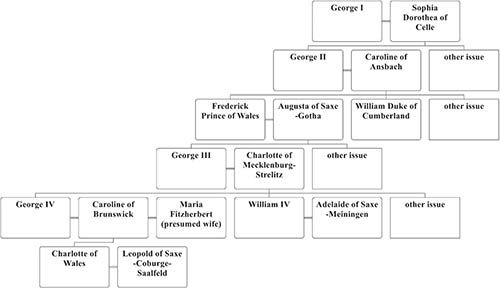
George I died in 1727 while on a tour of his German kingdom; he was buried in Hanover. George Augustus, Prince of Wales, became George II and was received a little more kindly than his father, although his reign too was beset by problems, both in terms of wars and in the heart of his own family. Frederick, Prince of Wales, set himself in opposition to his royal father, repeating the history of the former generation. George II holds the distinction of being the last British monarch to lead an army into battle (at the Battle of Dettingen in 1743 during the War of the Austrian Succession when the British forces supported those of Hanover) and a determined bid by the Old Pretenders son, Charles Edward Stuart (the Young Pretender) to gain the crown culminated in the Jacobite rising of 1745.
George II died in 1760 and, his eldest son having predeceased him, his grandson became the new monarch, George III. His was a long reign, again marked by wars (most notably the American and French revolutionary wars) and family fallingsout. Popularly known as Farmer George due to his down-to-earth interest in the common and the everyday (in contrast with his extravagant and spendthrift sons), he is perhaps best remembered for his madness which resulted in George, Prince of Wales, being appointed as regent from 1811 until George IIIs death in 1820. As for George IV, well, you can read more about him and his excesses in the last chapter of this book.

